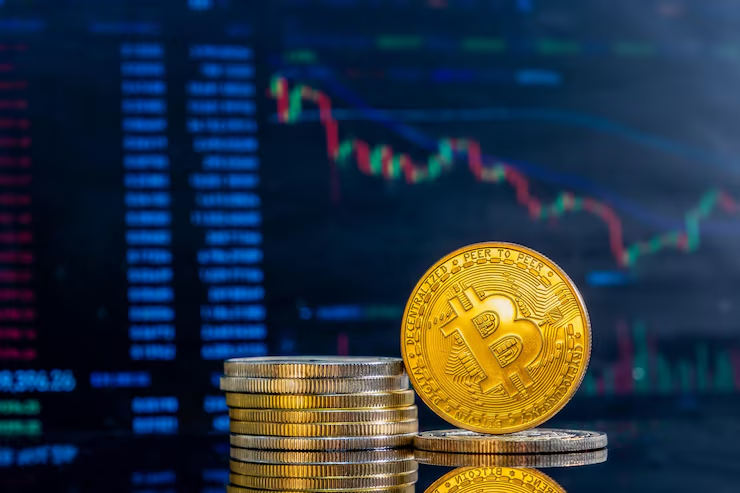

Table of Contents
Introduction to Cryptocurrency Supply
In the dynamic world of cryptocurrencies, the concept of supply refers to the total quantity of coins or tokens that can ever exist within a particular blockchain network. Unlike traditional fiat currencies, where central banks control the issuance and supply, cryptocurrencies operate on decentralized networks governed by mathematical algorithms and consensus mechanisms.
Cryptocurrency supply plays a pivotal role in determining various aspects of a digital asset’s ecosystem, including its scarcity, inflation rate, and market dynamics. By examining different supply metrics, investors can gain insights into the long-term viability and investment potential of a particular cryptocurrency.
Understanding Max Supply
Max Supply, also known as Maximum Supply or Total Supply Cap, represents the theoretical upper limit of coins or tokens that can ever be created within a cryptocurrency’s protocol. It serves as a fundamental parameter set during the project’s inception and is typically hardcoded into the blockchain’s protocol.
For example, Bitcoin, the pioneering cryptocurrency created by Satoshi Nakamoto, has a predetermined maximum supply of 21 million coins. This finite supply model is designed to mimic the scarcity characteristics of precious metals like gold, thereby instilling confidence among investors and mitigating inflationary pressures.
The significance of Max Supply extends beyond mere numerical constraints; it embodies the underlying philosophy and economic principles of a cryptocurrency project. By capping the total supply, developers aim to create a deflationary asset with the potential for long-term value appreciation.
Exploring Circulating Supply
Circulating Supply refers to the total number of coins or tokens that are actively circulating in the market and available for trading. Unlike Max Supply, which represents the theoretical upper limit, Circulating Supply provides real-time data on the number of tokens in circulation at any given moment.
In practice, Circulating Supply is influenced by various factors, including token distribution mechanisms, mining rewards, token burns, and token lock-ups. For instance, newly minted coins or tokens issued as block rewards contribute to the circulating supply, while tokens held in reserve or locked in smart contracts are excluded from this metric.
Understanding Circulating Supply is crucial for assessing a cryptocurrency’s liquidity, market capitalization, and price dynamics. Projects with a large circulating supply may experience greater price volatility, as the increased liquidity facilitates trading activities across multiple exchanges.


Total Supply: The Complete Picture
Total Supply represents the sum total of all coins or tokens that have been created within a cryptocurrency’s protocol since its inception. Unlike Circulating Supply, which focuses on actively traded tokens, Total Supply encompasses all tokens in existence, including those held by developers, locked in smart contracts, or designated for future releases.
While Total Supply provides comprehensive insights into a cryptocurrency’s overall distribution and issuance schedule, it may not accurately reflect the tokens available for trading in the open market. Investors should consider both Total Supply and Circulating Supply metrics to gauge the true liquidity and market dynamics of a cryptocurrency.
Analyzing Supply Dynamics
The interplay between Max Supply, Circulating Supply, and Total Supply shapes the supply dynamics of a cryptocurrency ecosystem, influencing its market behavior and investor sentiment. By examining these supply metrics in conjunction with other fundamental and technical factors, investors can make informed decisions and assess the long-term viability of a cryptocurrency project.
For example, a cryptocurrency with a limited Max Supply and a gradually increasing Circulating Supply due to a deflationary issuance model may attract investors seeking store-of-value assets with low inflationary pressures. Conversely, projects with unlimited or inflationary supply models may struggle to maintain value over time, as excessive token issuance dilutes scarcity and diminishes investor confidence.
Conclusion: Join the Conversation
In conclusion, understanding the nuances of cryptocurrency supply is essential for navigating the complex and ever-changing landscape of digital assets. By grasping the concepts of Max Supply, Circulating Supply, and Total Supply, investors can make informed decisions and mitigate risks in their cryptocurrency endeavors.
As the cryptocurrency market continues to evolve, the importance of supply dynamics will only grow, shaping the trajectory of individual projects and the broader ecosystem as a whole. We invite you to share your thoughts and insights on cryptocurrency supply in the comments below. Let’s continue the conversation and explore the fascinating world of digital currencies together!



